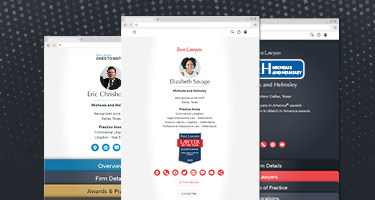Historically, New York’s workers' compensation laws have taken a notably restrictive view on mental health, limiting coverage predominantly to first responders experiencing trauma tied to specific, extraordinary emergencies.
For most employees, stress—even when extreme or debilitating—rarely qualified under the stringent standards of previous statutes.
But as of January 1, 2025, Gov. Kathy Hochul signed groundbreaking legislation that has dramatically altered that landscape.
This landmark change significantly expands coverage, allowing any employee across the state—including those working remotely—to pursue claims for mental injuries stemming from "extraordinary work-related stress."
A Landmark Expansion for New York Workers
Perhaps the most significant aspect of this change is the removal of the requirement that claimants show their work-related stress exceeded what is typically expected in their role or industry.
Previously, even first responders—arguably some of the most stress-exposed employees—had to prove their experiences surpassed the ordinary stresses inherent to their duties. This high evidentiary bar meant many claims were quickly dismissed, despite very real impacts on mental health.
With the removal of this constraint, New York’s law now places emphasis squarely on the nature and severity of stress rather than artificially comparing experiences to an arbitrary baseline.
The legislation also broadens eligibility beyond first responders. It now encompasses all New York employees—teachers, healthcare workers, corporate staff, and remote workers alike—recognizing stress transcends occupational boundaries.
Inclusion of remote workers represents a forward-looking aspect of the legislation. The proliferation of remote and hybrid work arrangements has fundamentally changed workplace dynamics, blurring traditional boundaries between work and personal life. Remote workers may experience isolation, increased work hours, relentless availability expectations, or a lack of clear boundaries that exacerbate stress. By explicitly covering these workers, the legislation acknowledges that the contemporary workplace transcends physical location, ensuring protections adapt to modern employment realities.
The law explicitly recognizes that work-related stress isn't always linked to a single, traumatic incident. Stress is frequently cumulative, building over time. Previous statutes rarely accommodated this reality, typically requiring identification of a discrete incident—like an emergency or traumatic event—as the cause of stress.
The new standard allows claims based on ongoing and cumulative mental strain, a critical acknowledgment aligning law more closely with psychological and medical understandings of stress.
Up to Interpretation
Yet, as transformative as these changes are, they raise important questions and challenges.
The new legislation hinges significantly on interpretations of "extraordinary work-related stress," a term notably undefined in the law itself.
This ambiguity leaves administrative law judges (ALJs) at the Workers’ Compensation Board tasked with the heavy responsibility of clarifying and defining what exactly constitutes "extraordinary" stress on a case-by-case basis. Given the absence of explicit legislative guidance, decisions made by ALJs will shape New York's evolving standard through precedent.
This situation will undoubtedly lead to extensive litigation as both claimants and employers grapple with uncertainty over how these definitions will be applied. Claimants will need substantial evidence, including expert medical testimony and thorough documentation, to convincingly establish their claims.
Employers, conversely, will be compelled to defend against a broader array of mental health claims, potentially driving up insurance premiums and associated administrative costs. Over time, as ALJs render decisions, these precedents will begin to clarify boundaries and expectations, bringing increased predictability. But, initially, uncertainty could drive considerable litigation activity, requiring vigilance from attorneys representing both employers and employees.
Practically speaking, this legislative change will almost certainly lead to a marked increase in mental health-related claims. As awareness grows among employees, especially those previously ineligible under former rules, filings could surge dramatically. Employers and their counsel must proactively adapt, preparing not only for an increased volume but also for the complexity of navigating these uncharted legal waters.
Attorneys will play a pivotal role not just in litigation but also in educating employers, shaping policies, and mitigating risks.
Legal Implications and Challenges
This legislative expansion undeniably brings progressive change, but it simultaneously complicates litigation for both employees and employers. One immediate consequence attorneys must expect is an increase in evidentiary complexity.
Unlike claims rooted in physical injury, stress and mental health claims inherently lack straightforward medical documentation or visible signs of trauma. Proving the legitimacy and severity of stress injuries will heavily depend on comprehensive psychological evaluations, detailed medical records, and nuanced, expert testimony explicitly tying conditions to extraordinary workplace stressors.
This evidentiary burden will likely amplify litigation costs, presenting significant challenges, especially for claimants unfamiliar with navigating complex workers' compensation proceedings. Employers, too, will need to marshal specialized experts to scrutinize and potentially dispute such claims, heightening both legal complexity and cost.
The Workers' Compensation Board itself may struggle to manage the surge in filings, creating administrative backlogs and longer resolution timelines. Attorneys representing both sides should expect these delays, counseling clients on realistic expectations regarding the timeframe for resolving claims.
Central to understanding the broader legal implications is New York's doctrine of workers' compensation exclusivity. Under this doctrine, once an employee qualifies for workers’ compensation benefits, this remedy replaces other avenues for workplace-related emotional distress claims.
Historically, emotional distress claims found their way into courtrooms as standalone lawsuits or were incorporated into broader litigation involving employment discrimination or hostile work environments. Now, with an expanded definition of compensable stress under workers’ compensation, attorneys should anticipate a significant redirection of emotional distress claims away from traditional civil courts toward the Workers’ Compensation Board.
However, the exclusivity doctrine is not absolute. Notably, two significant exceptions exist.
First, if an employer fails to maintain required workers’ compensation insurance, employees retain the option of pursuing emotional distress claims directly through civil litigation. Attorneys must vigilantly verify their clients' insurance compliance to avoid unintended litigation exposure.
Second, employees can bypass exclusivity when alleging intentional torts, such as intentional infliction of emotional distress or deliberately harmful actions by employers. Legal counsel must therefore carefully evaluate allegations of intentional misconduct, distinguishing legitimate claims from attempts to sidestep exclusivity.
Practical Guidance for Employers and Legal Counsel
In response to this landmark legislation, employers and their legal counsel must act swiftly and decisively. The first and most immediate step involves a thorough review of existing workers' compensation insurance policies.
Attorneys should counsel employers to ensure their coverage explicitly includes work-related stress and mental health injuries, verifying that the language in these policies aligns with New York’s expanded definitions. Insurance policies designed under previous standards likely contain exclusions or limitations on mental health claims, and outdated coverage could leave employers dangerously exposed to significant financial liabilities.
Beyond updating insurance coverage, employers must comprehensively train HR and management teams to identify, manage, and document workplace stress incidents. Key stakeholders should recognize employee distress signs—such as anxiety, burnout, or attendance issues—particularly those indicative of cumulative stress. Thorough documentation helps establish clear causal connections, potentially minimizing disputes during litigation.
Employers should also proactively engage in regular internal audits aimed at identifying workplace factors contributing to employee stress. Such audits, ideally performed with oversight by legal counsel, can spotlight problematic workplace practices, chronic staffing shortages, excessive workloads, or toxic management styles—issues that frequently lead to stress claims.
To further mitigate potential legal exposure, companies should prioritize investing in robust mental health support programs. Accessible, confidential counseling services, stress management workshops, employee assistance programs (EAPs), and mental health resources demonstrate proactive care, which can positively influence how claims are perceived by administrative law judges. Employers that invest in preventative measures and employee wellness initiatives may gain strategic advantages in litigation, positioning themselves as proactive rather than reactive.
Equally essential is strategic and transparent communication with employees regarding the scope, availability, and boundaries of the expanded coverage. Misunderstandings or misinformation can fuel unnecessary or frivolous claims, complicating matters for both claimants and employers.
Navigating New York’s New Stress Frontier
New York’s groundbreaking expansion of workers’ compensation coverage marks a significant advancement, acknowledging workplace mental health injuries as genuine, compensable harms.
Yet, these progressive changes usher in complexities employers and counsel must confront proactively, closely tracking how the Workers’ Compensation board interprets "extraordinary work-related stress," in emerging administrative rulings.
These early decisions will be critical in clarifying the practical boundaries and applicability of the new standard, directly influencing how future claims are evaluated.






















